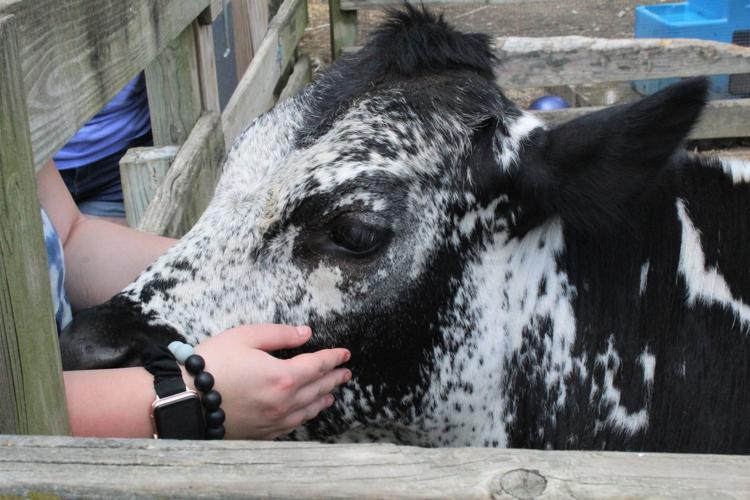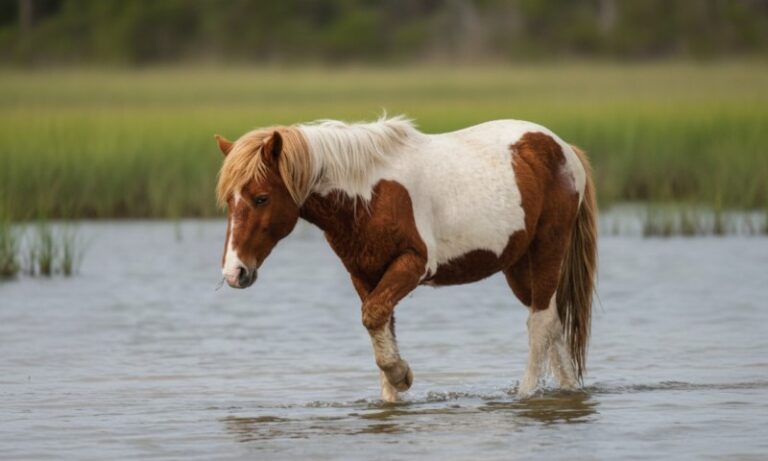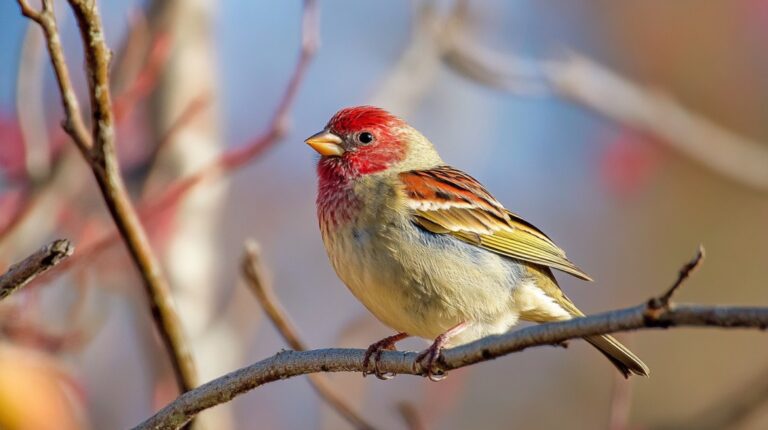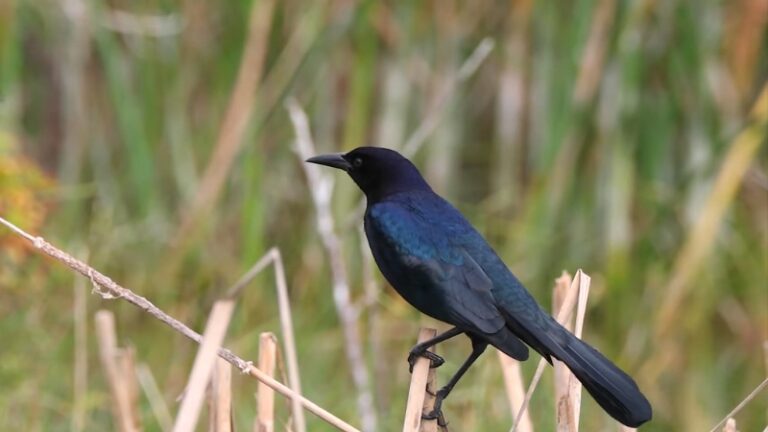NOVA Wild, located in Reston, Virginia, is a 30-acre (12 ha) zoo offering a unique wildlife experience.
The zoo features a self-drive-through safari where visitors can encounter animals such as zebras, bison, and llamas from the comfort of their vehicle.
Additionally, the zoo has a walking tour that includes cheetahs, capybaras, kangaroos, sloths, and a bird aviary.
Visitors can also enjoy camel rides. With over 50 species of animals, NOVA Wild provides an immersive and educational experience for animal lovers of all ages.
Situated just a short drive from Washington, D.C., it is a family-friendly destination for those exploring Northern Virginia.
Table of Contents
Toggle1. Cheetah
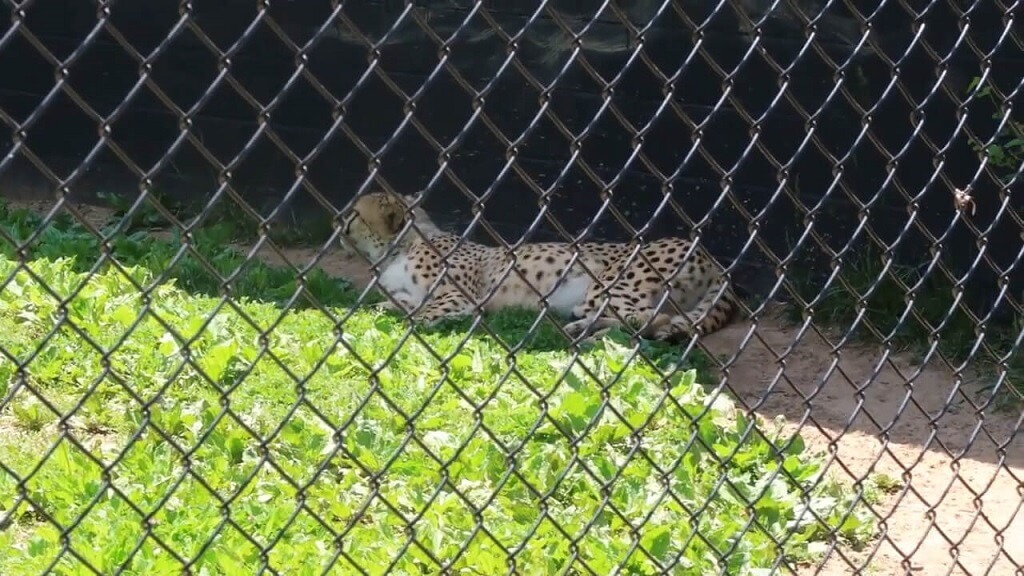
Once widespread across Sub-Saharan Africa, the Middle East, and central India, cheetahs are now primarily found in fragmented populations in southern, eastern, and northwestern Africa, as well as central Iran.
The cheetah is renowned as the fastest land animal on Earth, capable of reaching speeds up to 70 mph.
This incredible speed is facilitated by several physical adaptations.
Enlarged nostrils and air-filled sinuses allow for rapid oxygen intake, increasing their breathing rate from 60 to 150 breaths per minute during a chase.
Their hearts, livers, adrenals, bronchi, and lungs are all oversized to support this intense activity.
| Characteristic | Details |
|---|---|
| Unique Fact | Cheetahs cannot roar; they communicate through chirps, purrs, and growls, unlike other big cats. |
Beyond their speed, each cheetah boasts a unique spot pattern, much like a human fingerprint.
This distinctive coat not only provides camouflage in the grassy plains but also helps researchers identify individual animals.
Interestingly, cheetahs have semi-retractable claws that provide extra grip during high-speed pursuits, similar to the cleats worn by athletes.
2. Red River Hog
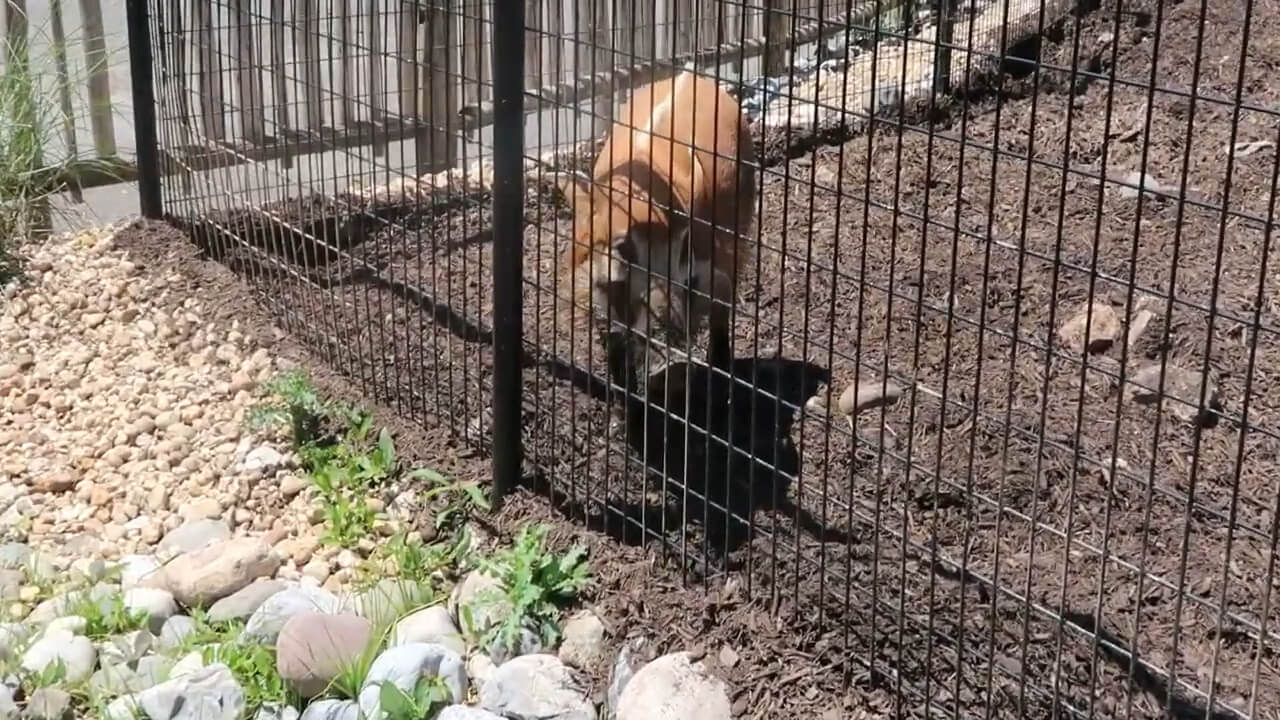
These hogs inhabit the rainforests, wet savannas, and forested valleys near rivers, lakes, and marshes in Africa, ranging from the Gambia to the eastern Congo and southwards to the Congo River.
With their striking red coats and tufted white facial hair, red river hogs are not just visually captivating but also ecologically significant.
They are omnivorous nocturnal foragers, consuming everything from seeds and fruits to carrion.
Fascinatingly, they have been observed following chimpanzees to feed on dropped fruit and even consuming elephant dung to extract undigested seeds.
| Characteristic | Details |
|---|---|
| Unique Fact | Red river hogs are excellent swimmers, diving into water to escape predators. |
Their love for wallowing in rivers and streams not only gives them their name but also plays a role in their skincare, helping to remove parasites and cool down their bodies.
These behaviors highlight their adaptability and the intricate connections within their ecosystem.
3. Silvery Cheeked Hornbill
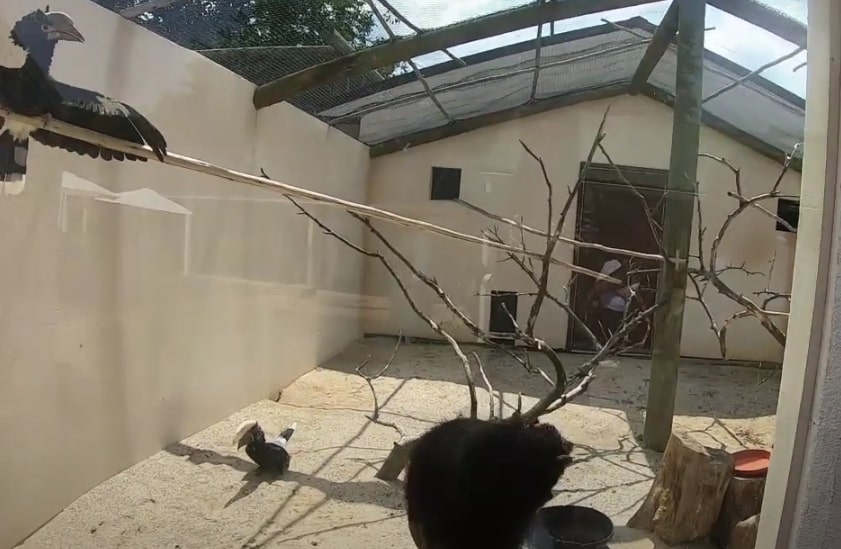
Found in the forests of East Africa, from Ethiopia down to South Africa and Zimbabwe.
Silvery-cheeked hornbills exhibit a unique nesting strategy. The female seals herself inside a tree cavity with mud, droppings, and fruit pulp, leaving only a narrow slit.
This small opening allows the male to pass food to her and the chicks, protecting them from predators.
This period can last several months, during which the female relies entirely on the male for sustenance.
| Characteristic | Details |
|---|---|
| Unique Fact | These hornbills often follow monkeys, feeding on the fruit the monkeys drop from trees. |
Their impressive beaks, while large, are lightweight due to a honeycomb structure of bone covered with keratin.
This adaptation allows them to forage effectively without being weighed down.
Moreover, their loud calls resonate through the forest canopy, playing a vital role in communication and mating rituals.
4. Red Ruffed Lemur
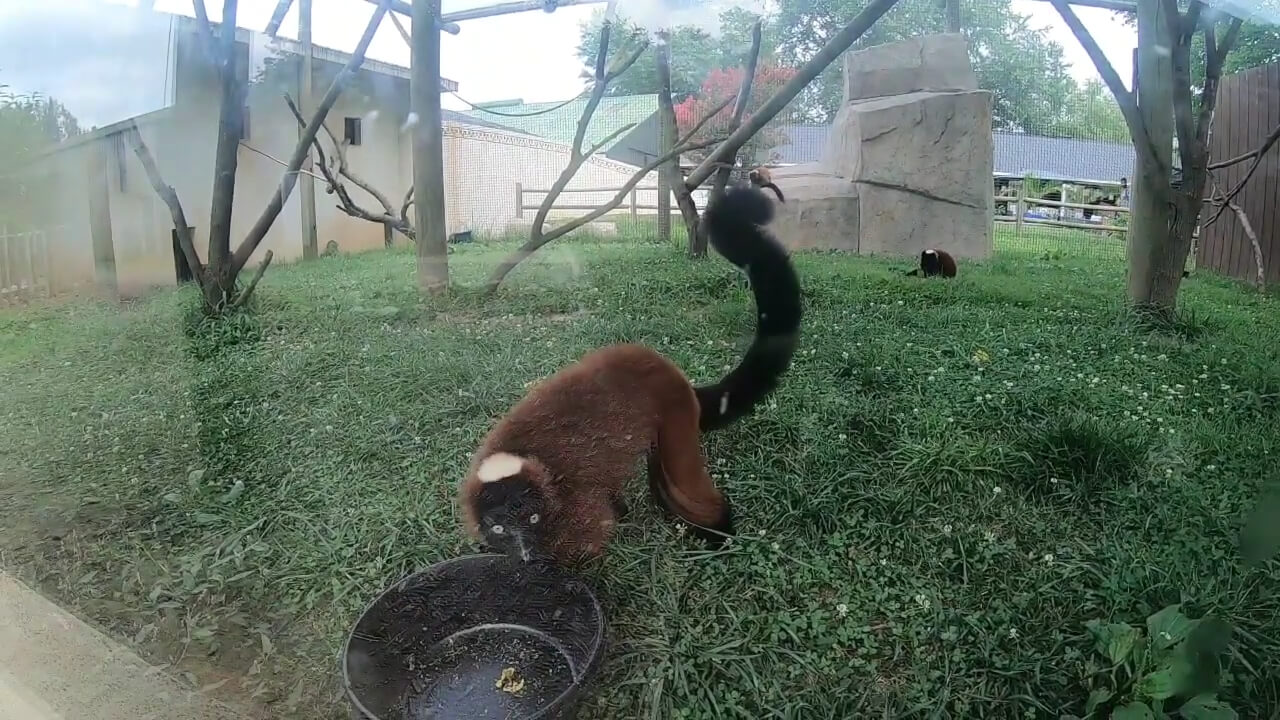
Native to the northeastern part of Madagascar.
Red ruffed lemurs are known for their loud, distinctive calls, which they use to communicate with group members and warn of predators.
Unlike many primates, they give birth to litters of three to six offspring, which remain in nests while the adults forage.
This nesting behavior is unique among lemurs.
| Characteristic | Details |
|---|---|
| Unique Fact | Red ruffed lemurs have a specialized grooming claw on their hind feet to keep their fur clean. |
These lemurs also play a crucial role in their ecosystem as pollinators.
While feeding on nectar, pollen sticks to their fur and is transferred between flowers, aiding in plant reproduction.
Their contributions highlight the interconnectedness of species within Madagascar’s rich biodiversity.
5. Brown Lemur
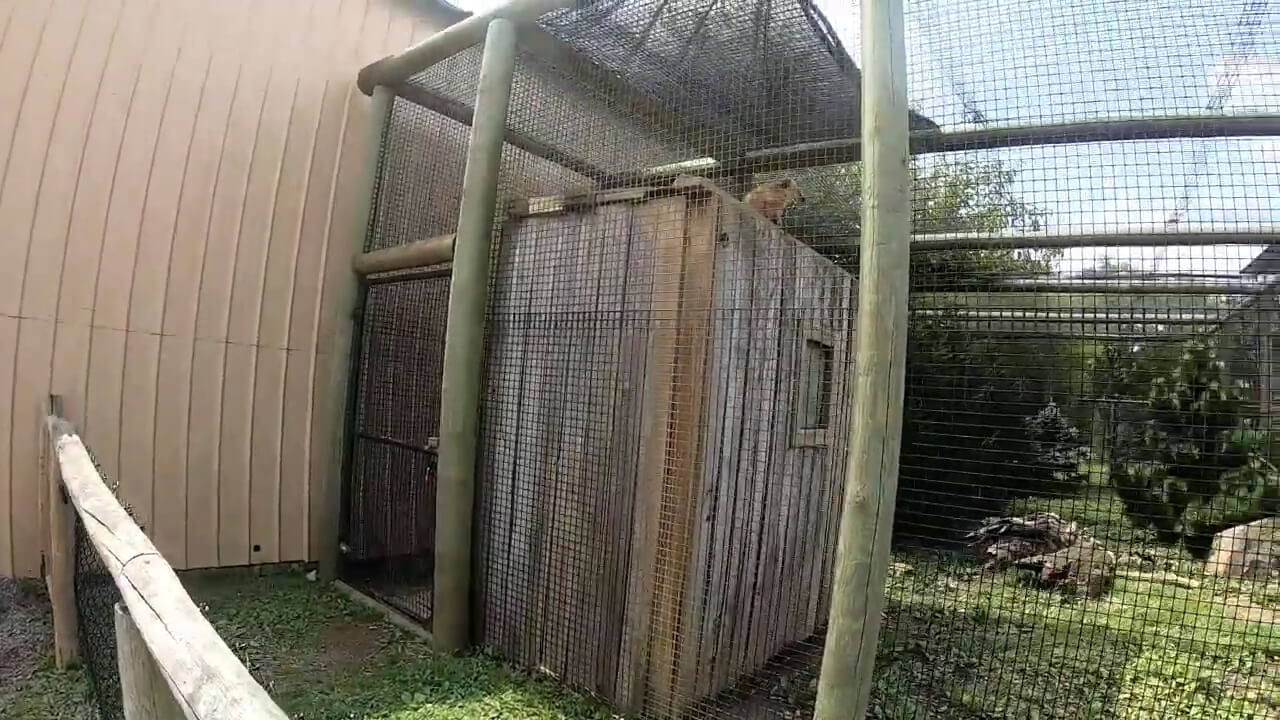
Found in the dry forests of northwestern Madagascar and the lowland and montane rainforests of the east.
Brown lemurs are cathemeral, meaning they are active both day and night, a rare trait among primates.
Their diet is highly varied, consisting of fruits, leaves, flowers, nectar, and even bark.
They consume over 100 plant species, which not only nourishes them but also aids in seed dispersal across their habitat.
| Characteristic | Details |
|---|---|
| Unique Fact | Brown lemurs have prehensile tails, which they use for balance and support while moving through trees. |
Their ability to adapt to different environmental conditions and food sources is a testament to their resilience.
Additionally, their social structures and interactions provide valuable insights into primate behavior and ecology.
6. Cotton Top Tamarin
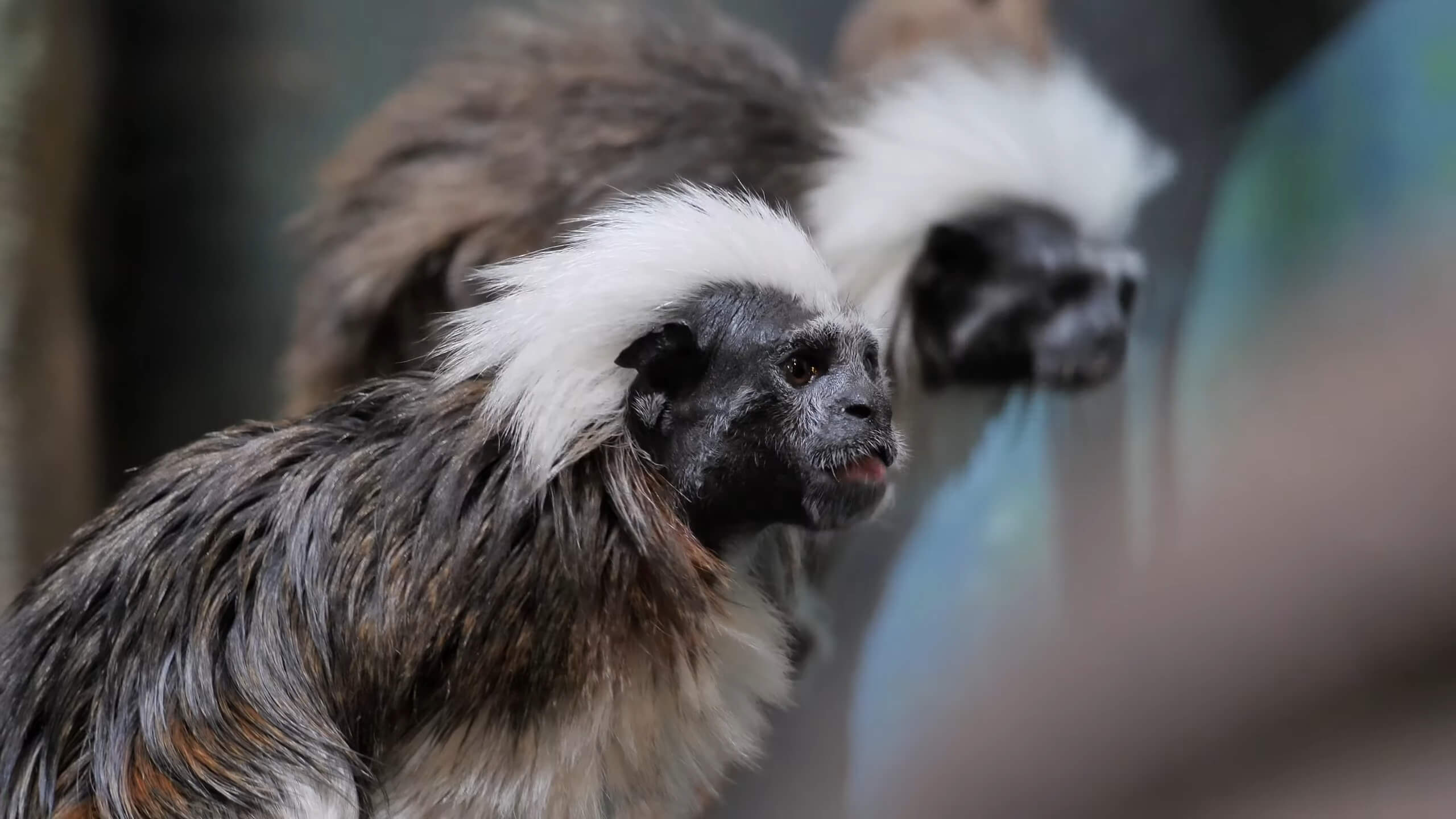
Inhabit a small region in northwest Colombia, bounded by the Cauca and Magdalena Rivers and the Atlantic coast.
Despite their small size, cotton-top tamarins have a significant ecological impact.
They ingest large seeds, which they later excrete, facilitating seed dispersal and forest regeneration.
This behavior also helps them mechanically expel intestinal parasites, showcasing an intriguing survival strategy.
| Characteristic | Details |
|---|---|
| Unique Fact | Cotton-top tamarins often use scent marking as a form of communication to establish territory. |
Cotton-top tamarins have a unique daily routine; they sleep past dawn and begin foraging later in the morning.
This schedule reduces the risk of encountering predators that are active at dawn.
Their complex vocalizations, with over 40 distinct sounds, demonstrate sophisticated communication within their social groups.
7. White-Faced Capuchin
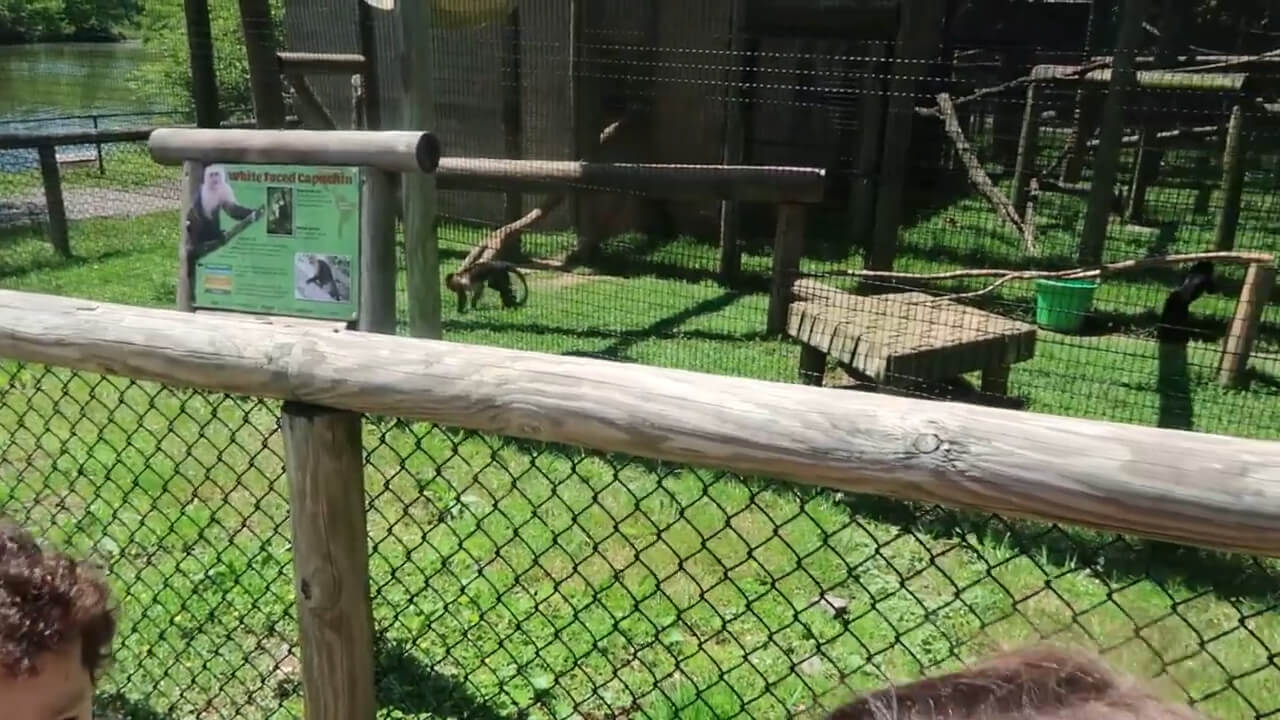
Reside in the tropical forests of Panama, Costa Rica, Colombia, Ecuador, and Nicaragua.
Known for their intelligence and adaptability, white-faced capuchins communicate using a variety of sounds, such as chirps, barks, and whistles.
They are adept climbers, utilizing their prehensile tails to grasp branches, which acts like a fifth limb.
| Characteristic | Details |
|---|---|
| Unique Fact | White-faced capuchins are known to wash their food, especially when near water sources. |
These monkeys are one of the few primate species observed using tools.
They have been seen rubbing plants on their fur as insect repellent and using sticks to extract insects from crevices.
Their complex social structures and problem-solving abilities make them a subject of interest in primate research.
8. Squirrel Monkey
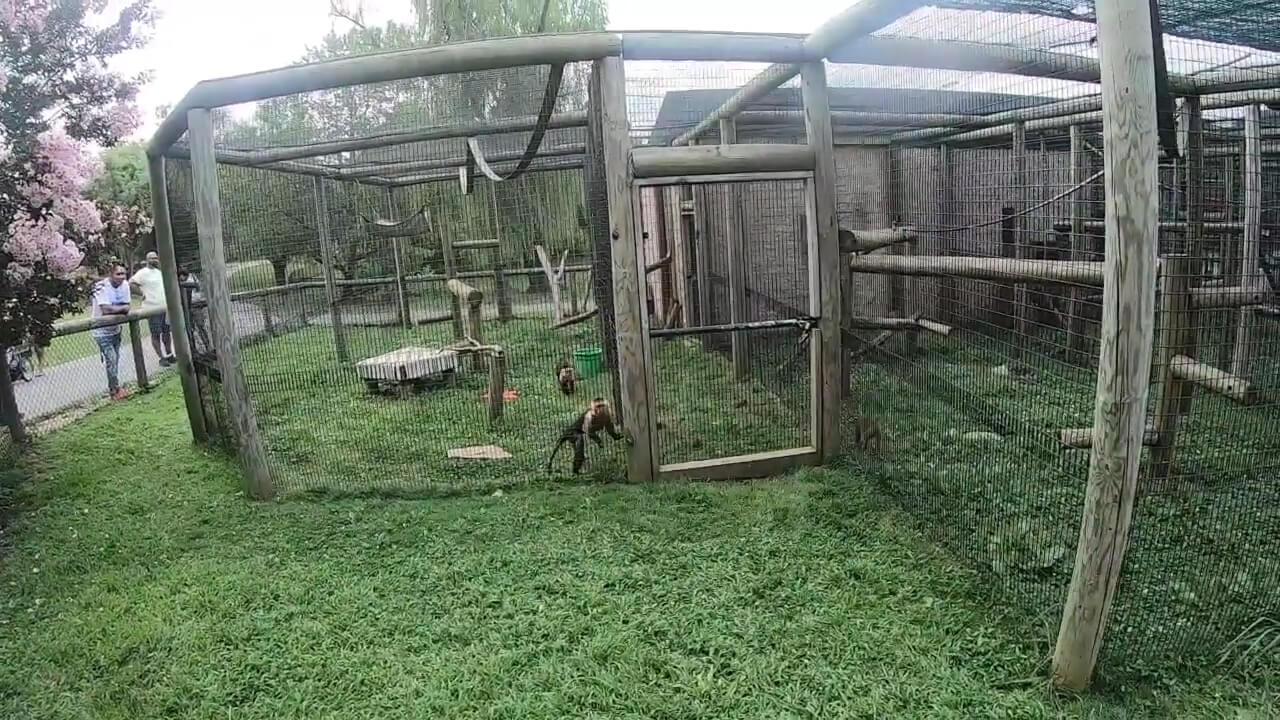
Found throughout parts of Central and South America, including Costa Rica, Panama, Venezuela, and Brazil.
Squirrel monkeys have the largest brain-to-body mass ratio of all primates, which correlates with their intricate social behaviors and cognitive abilities.
Living in large groups that can exceed 500 individuals, they exhibit complex social structures with subgroups based on age and reproductive status.
| Characteristic | Details |
|---|---|
| Unique Fact | Squirrel monkeys are known to form subgroups based on age, sex, and reproductive status within their large social groups. |
They often associate with Cebus monkeys, benefiting from shared knowledge of food sources and predator alerts.
Their interactions highlight the benefits of interspecies cooperation. Additionally, their urine-washing behavior serves as a means of communication and territorial marking.
9. Tayra
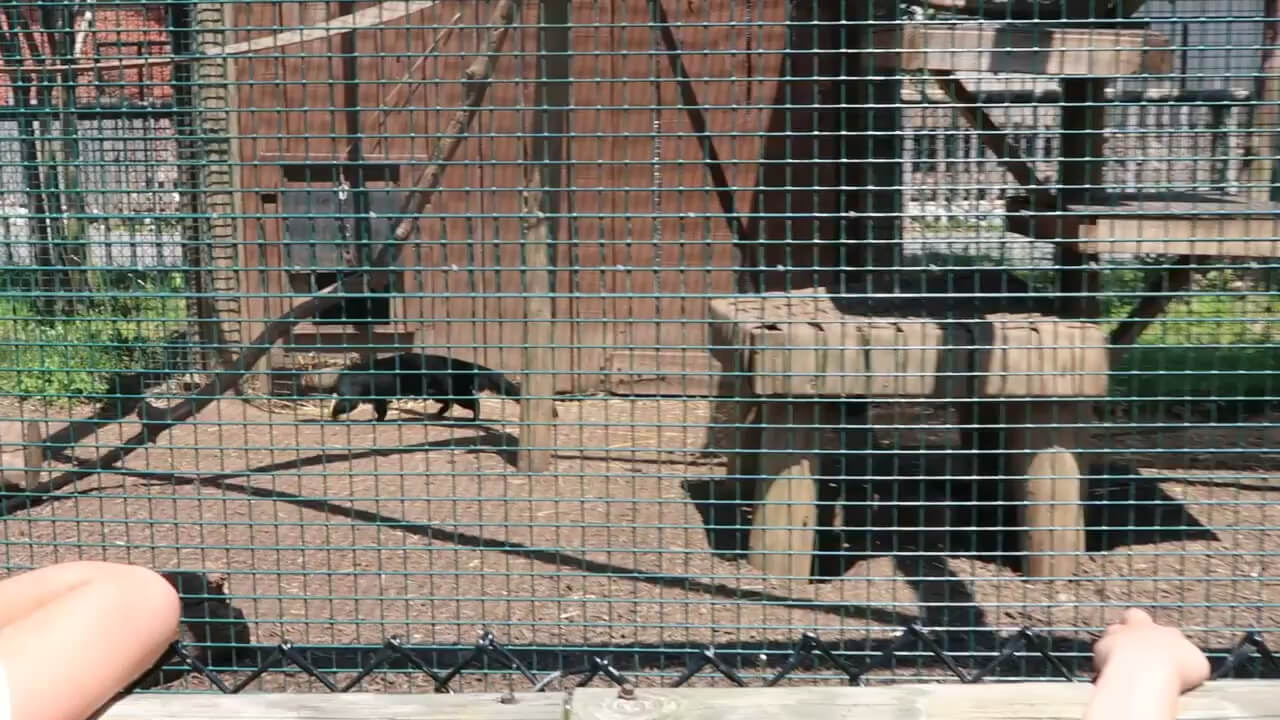
Inhabit neo-tropical forests from inland Northern Argentina to Mexico.
Tayras are versatile creatures, moving both in trees and on the ground with erratic, bounding motions.
Their omnivorous diet includes fruits, small mammals, insects, and birds, but they show a particular preference for spiny rats.
| Characteristic | Details |
|---|---|
| Unique Fact | Tayras have the ability to climb down trees headfirst, similar to squirrels, which is rare for mammals. |
Historically, indigenous people kept tayras as pets to control rodent populations.
Their intelligence and adaptability have enabled them to thrive in various environments, and they play a role in controlling pest populations in their habitats.
10. Budgerigar

Native to the drier regions of Australia.
In the wild, budgerigars are found only in their natural green and yellow coloring, and they are smaller than their captive-bred counterparts.
The color of their cere, the area containing the nostrils, differs between sexes, helping in gender identification.
| Characteristic | Details |
|---|---|
| Unique Fact | Wild budgerigars engage in synchronized flight to confuse predators and reduce the risk of capture. |
Budgerigars are highly social and are known for their ability to mimic human speech and sounds, which has made them popular pets worldwide.
In their natural habitat, they form large flocks that can consist of thousands of individuals, creating a spectacular sight as they move across the skies.
11. Indian Peafowl
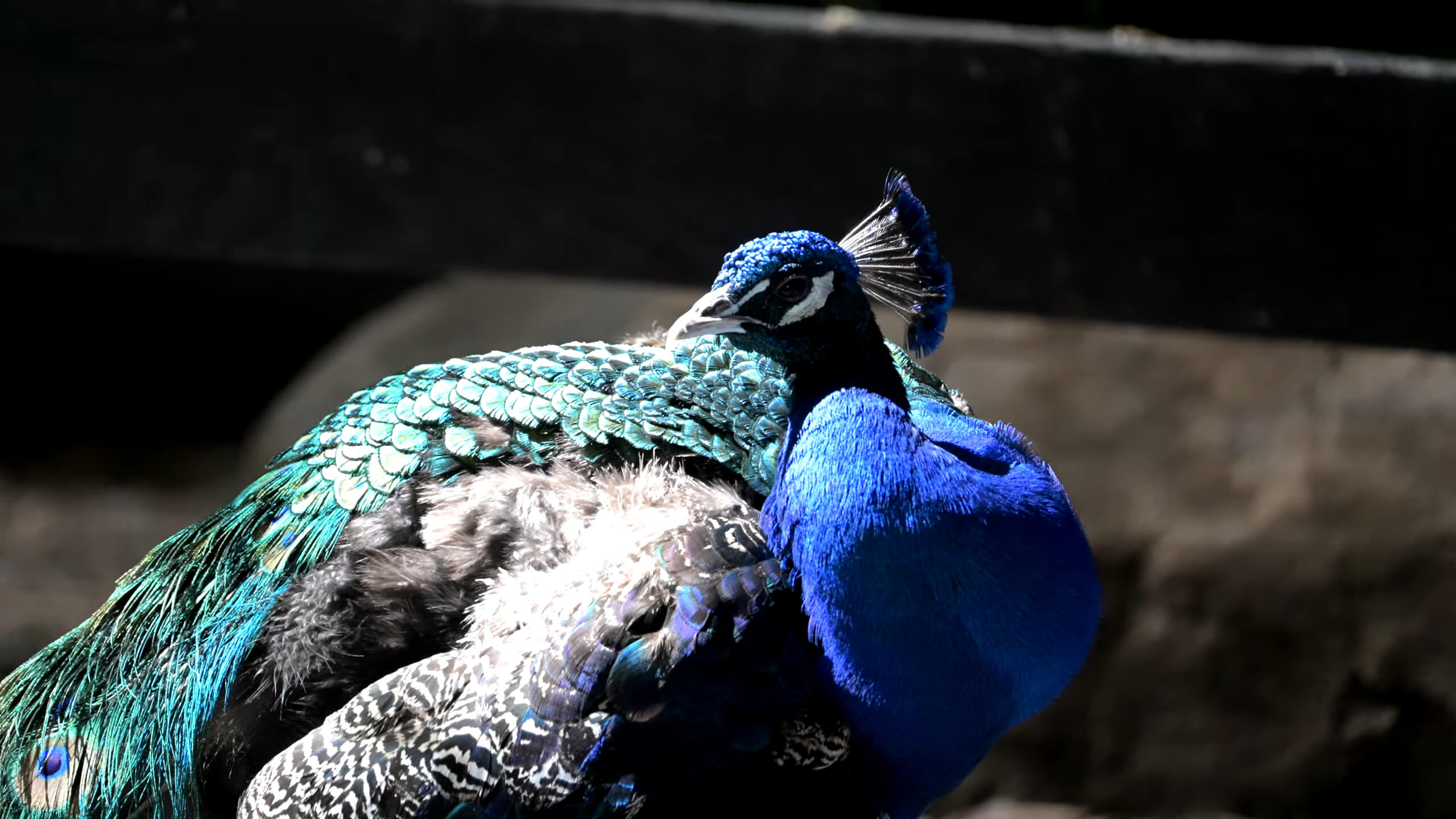
Forested areas from eastern Pakistan through India and south from the Himalayas to Sri Lanka.
The male Indian peafowl, or peacock, is famous for its stunning iridescent blue plumage and a magnificent train of tail feathers adorned with eye-like patterns called ocelli.
This train, which can reach up to five feet, is fanned out during courtship displays to attract peahens.
| Characteristic | Details |
|---|---|
| Unique Fact | Peafowls are omnivorous, feeding on small reptiles, insects, and plants in addition to seeds and grains. |
Despite their elaborate appearance, peafowl are usually solitary in the wild, coming together primarily for breeding.
They are also quite vocal, with peacocks having seven additional calls used during territorial disputes, on top of the six-alarm calls shared by both sexes.
12. Emu
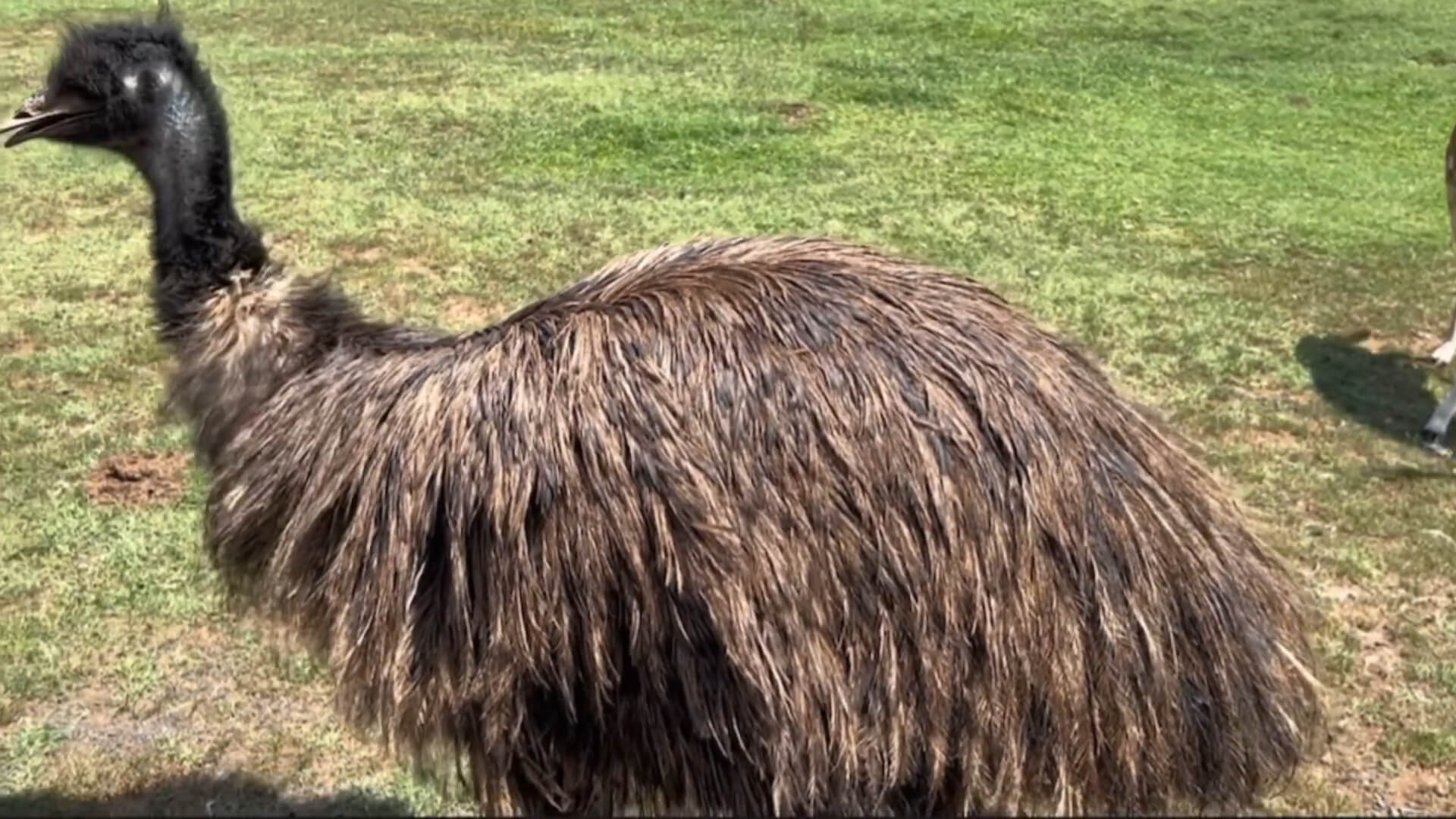
Predominantly found in Australia but also present in New Guinea, Indonesia, Solomon Islands, and the Philippines.
Emus are intriguing for their unique breeding behavior.
Males incubate up to 25 eggs laid by multiple females, enduring a fasting period of 54-60 days where they do not eat, drink, or defecate.
Post-hatching, the male becomes fiercely protective of the chicks.
| Characteristic | Details |
|---|---|
| Unique Fact | Emus have a specialized trachea that allows them to produce deep booming sounds to communicate over long distances. |
They possess a prehistoric-looking claw on the tip of their small wings and can travel hundreds of miles in search of food and water.
Emus are also known for their deep booming calls, which are produced using an inflatable neck sac.
13. Greater Rhea
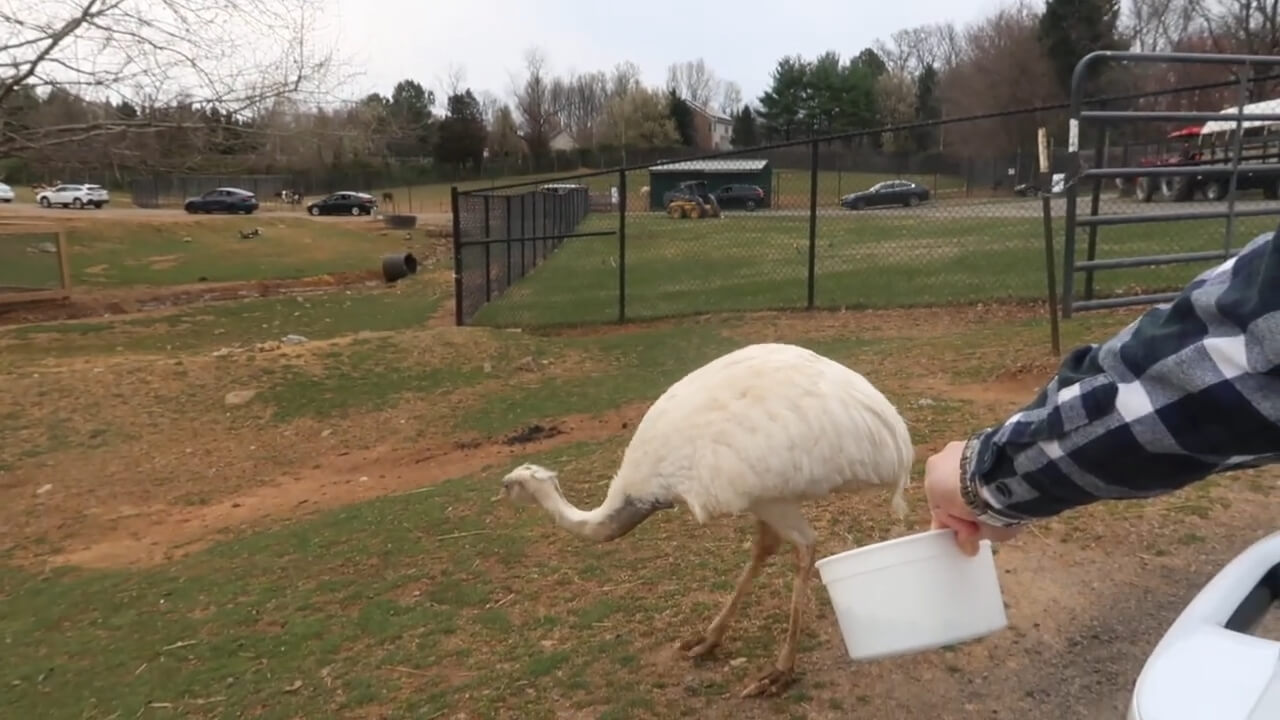
Southeastern South America, including Brazil, Bolivia, Uruguay, Paraguay, and Argentina.
Rheas have long wings for flightless birds, which they use for balance while running and to dodge predators in a zigzag pattern.
The greater rhea is generally silent but becomes vocal during the mating season, emitting low booming noises.
| Characteristic | Details |
|---|---|
| Unique Fact | Rheas can run up to 40 mph to evade predators, using their wings for balance. |
An interesting aspect of their behavior is that males take on the sole responsibility of incubating eggs and raising the chicks, which may come from multiple females.
This paternal care is crucial for the survival of the offspring.
14. Llama
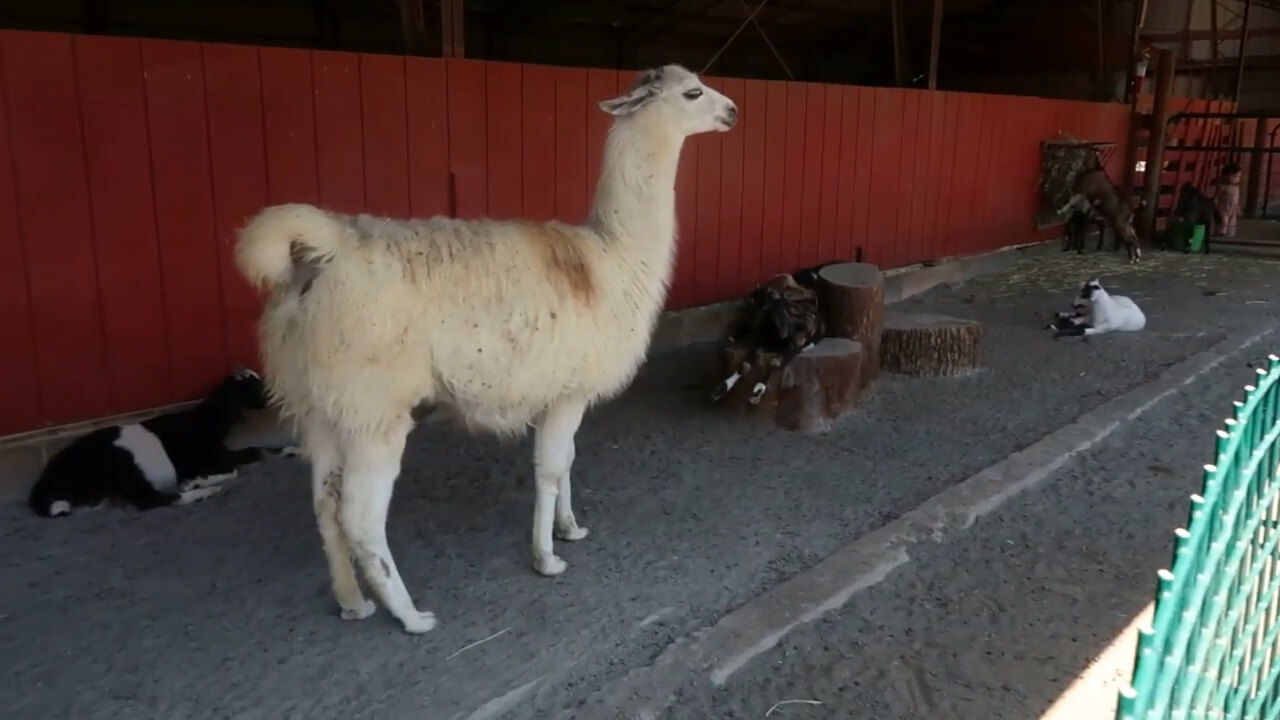
Domesticated in the Andes Mountains of South America, primarily Peru and Bolivia.
Llamas have blood rich in hemoglobin, allowing them to thrive at high elevations where oxygen levels are low.
They communicate with a variety of humming sounds and are known for their social nature.
| Characteristic | Details |
|---|---|
| Unique Fact | Llamas are known to spit as a defense mechanism but primarily use it to establish dominance within their group. |
Female llamas are called “dams” or “hembras,” and males are “studs” or “machos.”
Interestingly, llamas can spit as a defense mechanism or to establish dominance within the herd.
They have been used by humans for centuries as pack animals due to their strength and endurance.
15. American Bison
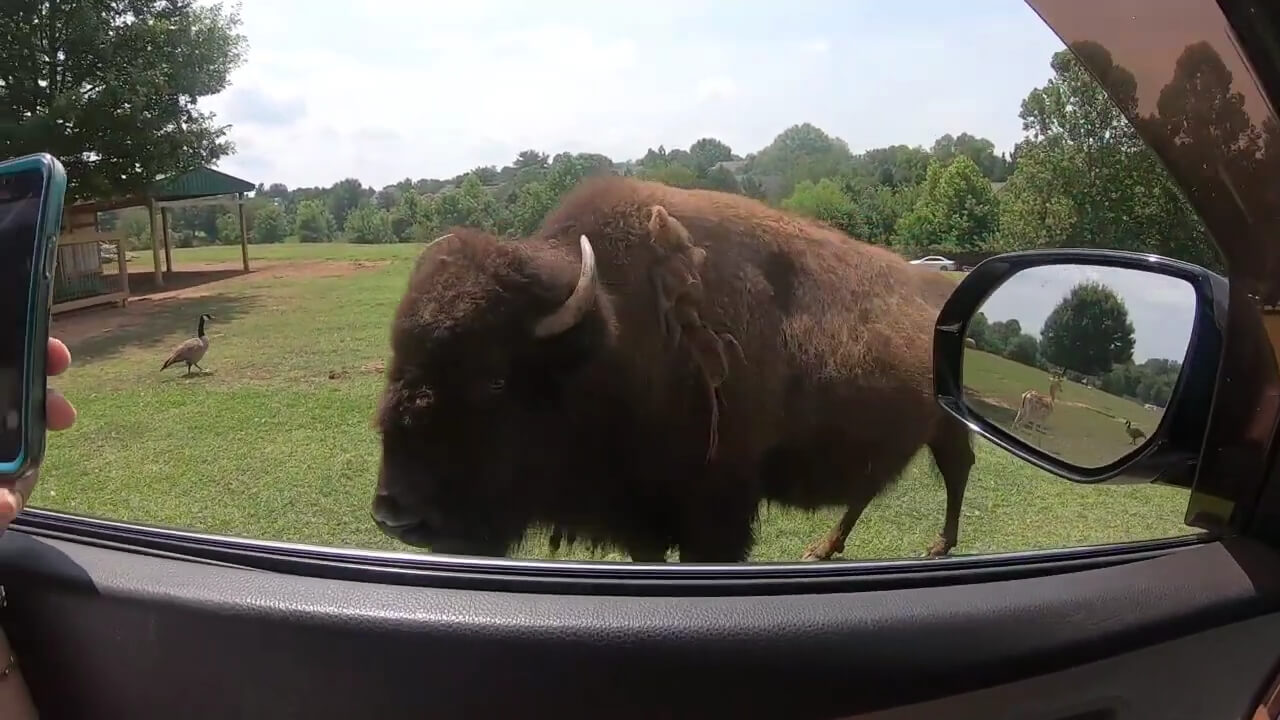
Found in parts of Canada and the United States, including Alberta, Montana, and South Dakota.
Bison once roamed the North American plains in massive herds, but their numbers dwindled to near extinction due to overhunting.
Conservation efforts have helped their populations recover, though they now occupy only one percent of their original range.
| Characteristic | Details |
|---|---|
| Unique Fact | Bison can run up to 35 mph and pivot quickly despite their large size. |
Bison live in groups structured by sex and age, with both cows and bulls establishing dominance hierarchies.
They engage in wallowing behavior, rolling in dust or mud to keep cool and deter insects.
Their presence is vital for maintaining the ecological balance of the grasslands.
Additionally, you can read more about the most dangerous animals that live in Virginia.
16. Asian Water Buffalo
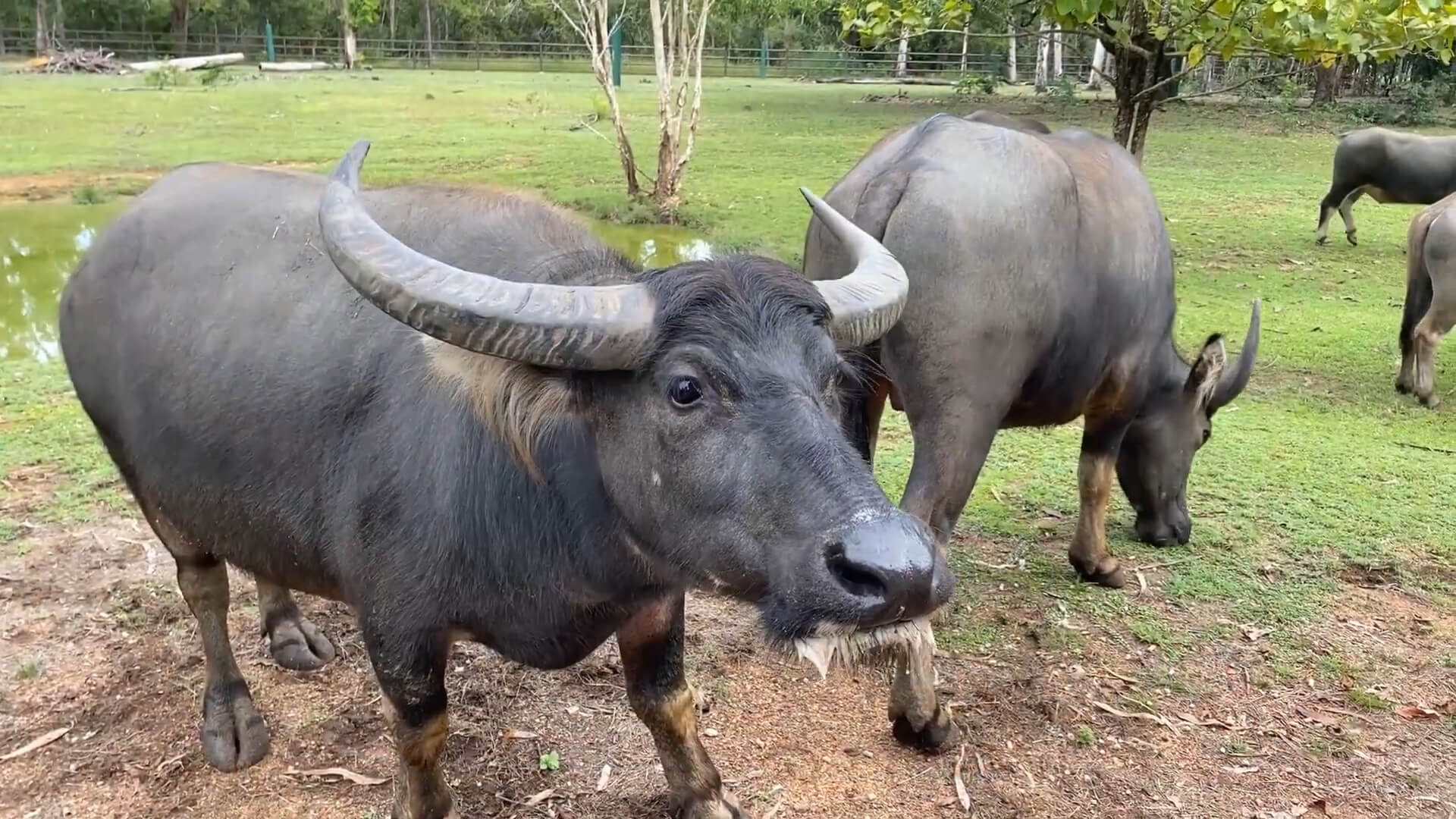
Native to parts of Asia, including Nepal, India, Vietnam, Malaysia, Thailand, and Bhutan.
Asian water buffaloes are well-adapted to life in wetlands and swamps.
Their wide, splayed hooves prevent them from sinking into muddy terrain, allowing them to move effortlessly through their habitat.
| Characteristic | Details |
|---|---|
| Unique Fact | Asian water buffaloes are known to wallow in mud to cool down and protect their skin from parasites. |
Female water buffaloes stay with their mother’s herd for life, while young bulls form bachelor groups after three years.
Sadly, the wild population has declined by at least 50% over the last three generations, totaling fewer than 4,000 individuals today.
17. Fallow Deer
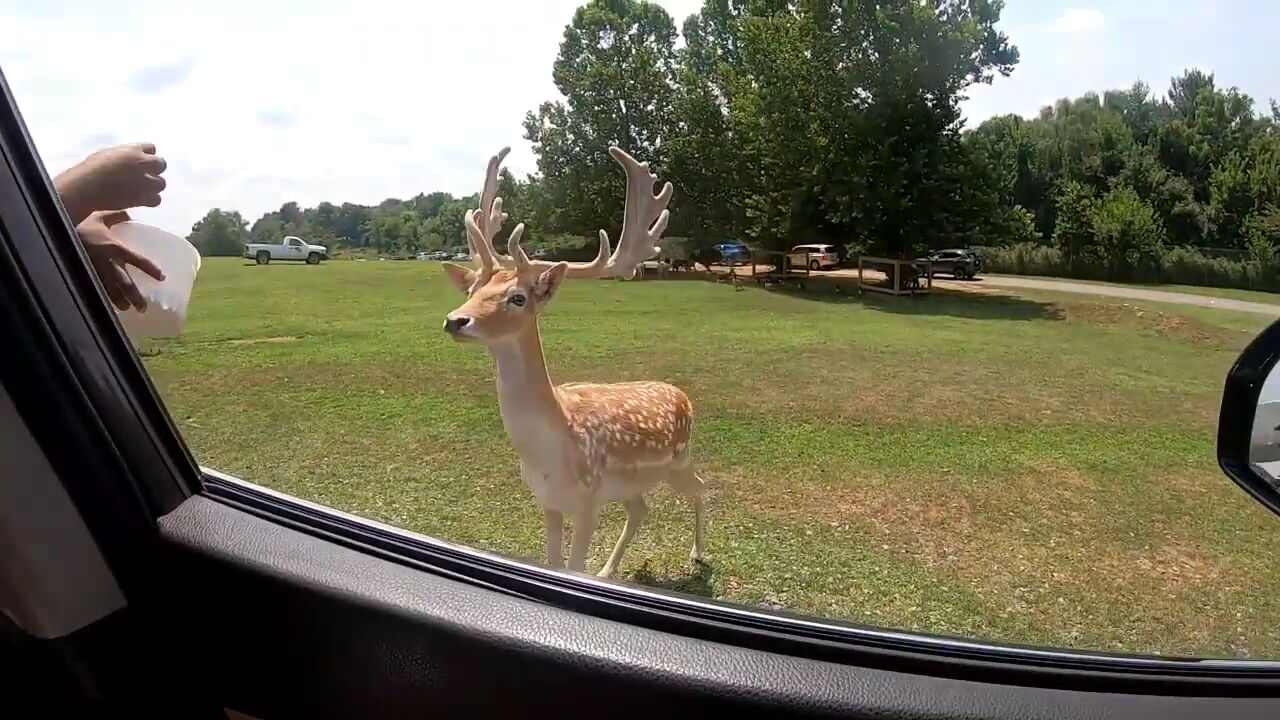
Originally from the Mediterranean region of Europe and Asia Minor, now introduced globally.
Fallow deer are the most widely kept deer species and are now found on every continent except Antarctica.
They are the sole survivors of the Megacerines, a diverse group of deer that once roamed the Earth.
| Characteristic | Details |
|---|---|
| Unique Fact | Male fallow deer make a loud, deep groaning sound during the mating season, known as “groaning.” |
Their coat colors vary widely, from spotted to dark brown, and males have impressive palmated antlers.
Fallow deer have adapted well to different environments, often becoming part of local ecosystems after being introduced by humans.
18. Sika Deer
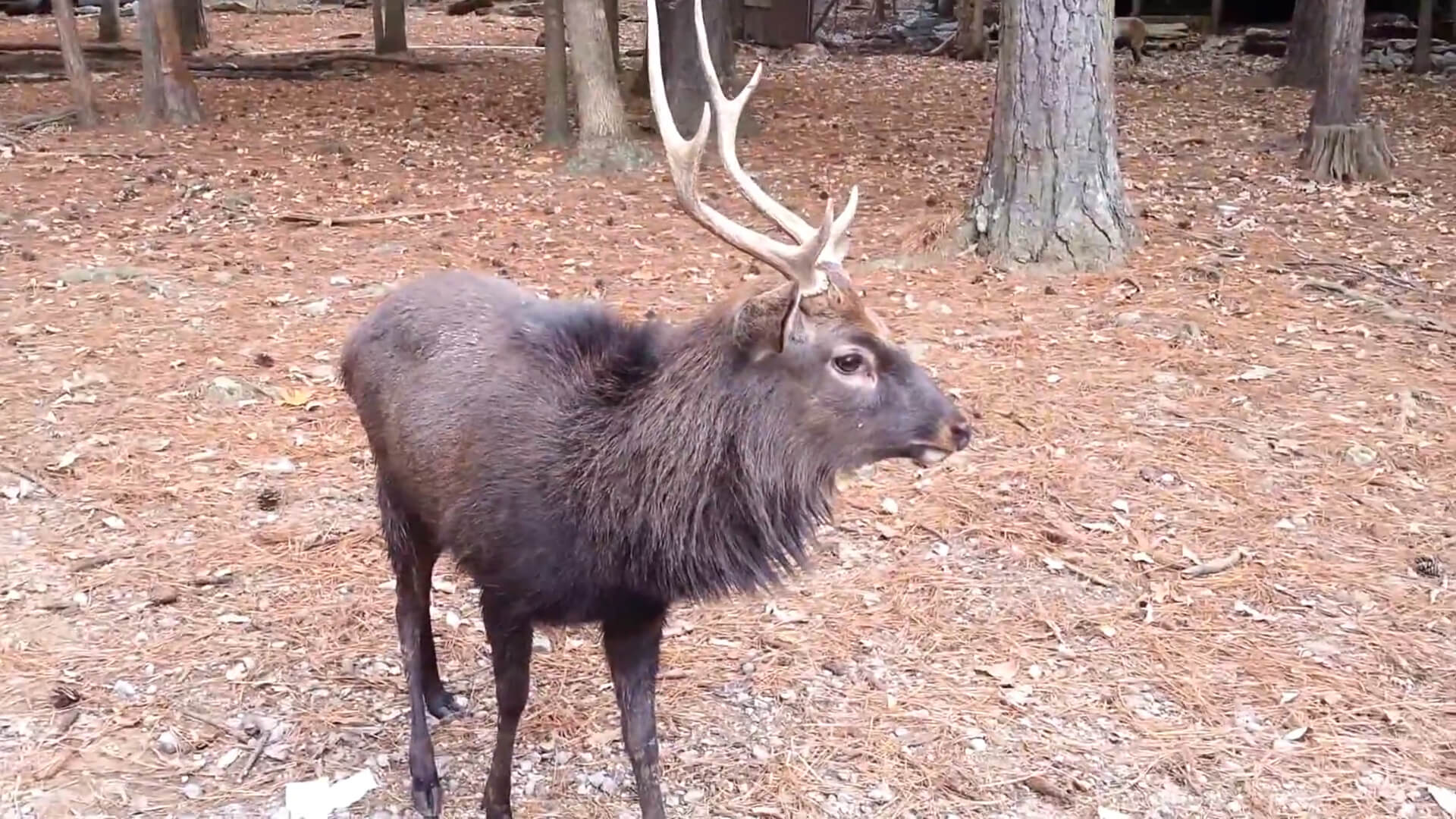
Native to much of East Asia.
Sika deer are notable for retaining their spots into adulthood, unlike most deer species.
They are excellent swimmers and will readily take to water to escape predators or reach new feeding areas.
| Characteristic | Details |
|---|---|
| Unique Fact | Sika deer can tolerate a variety of habitats, from dense forests to open grasslands, which has helped them spread globally. |
Highly vocal, sika deer use over ten different sounds for communication, including whistles and bleats.
Their ability to adapt to various habitats has led to successful introductions in countries outside their native range.
19. Donkey
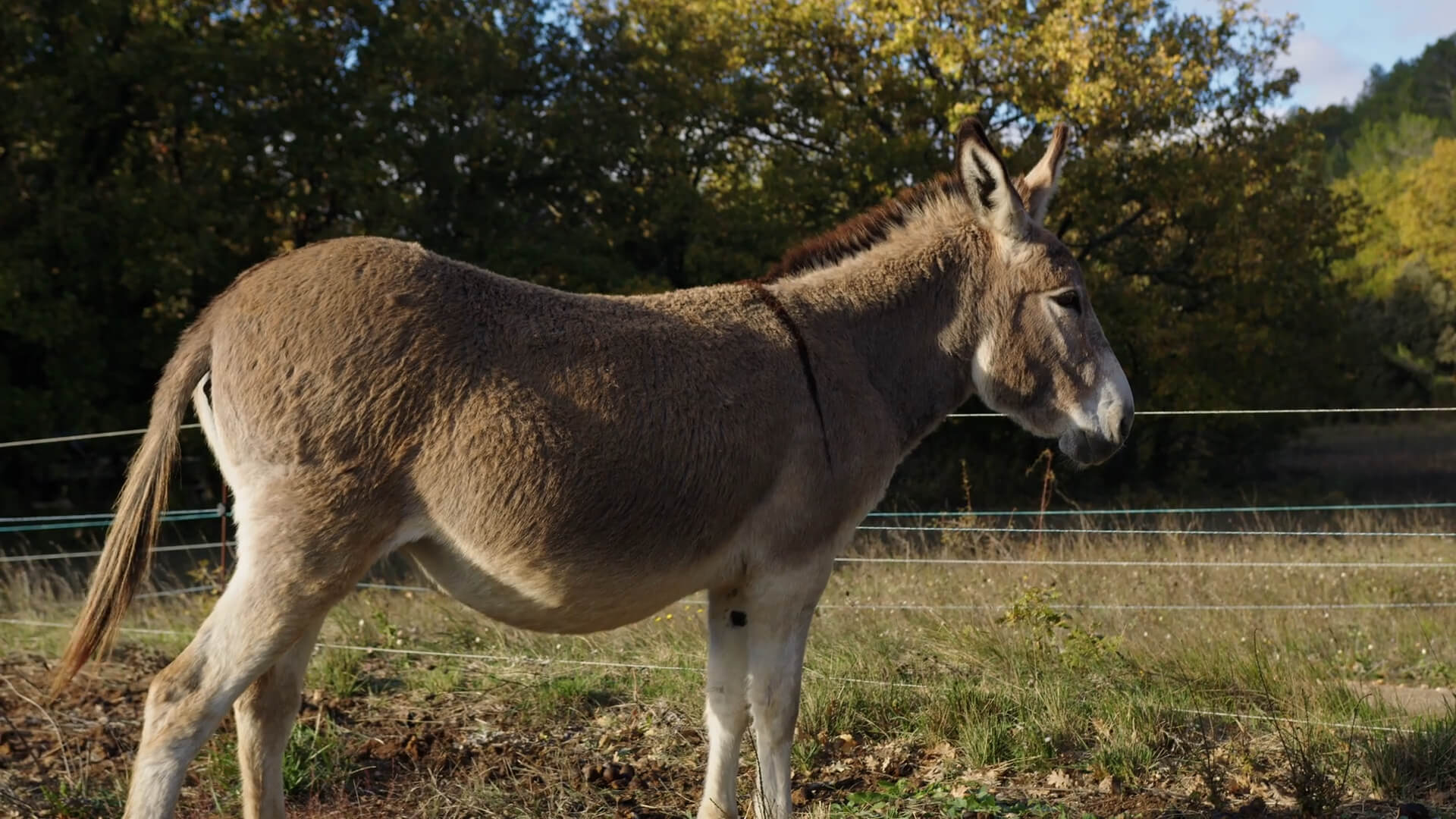
Originally native to the Mediterranean islands of Sicily and Sardinia, now domesticated worldwide.
Donkeys have been domesticated for over 6,000 years, serving as reliable work animals due to their strength and endurance.
Their long ears enhance their hearing and help dissipate heat, an adaptation to their native desert environments.
| Characteristic | Details |
|---|---|
| Unique Fact | Donkeys have an exceptional memory, being able to recognize places and other donkeys they’ve been with after many years. |
With both monocular and binocular vision, donkeys have a wide field of view but possess blind spots directly in front and behind them.
They are known for their cautious nature, which is often mistaken for stubbornness but is actually a survival trait.
20. Watusi
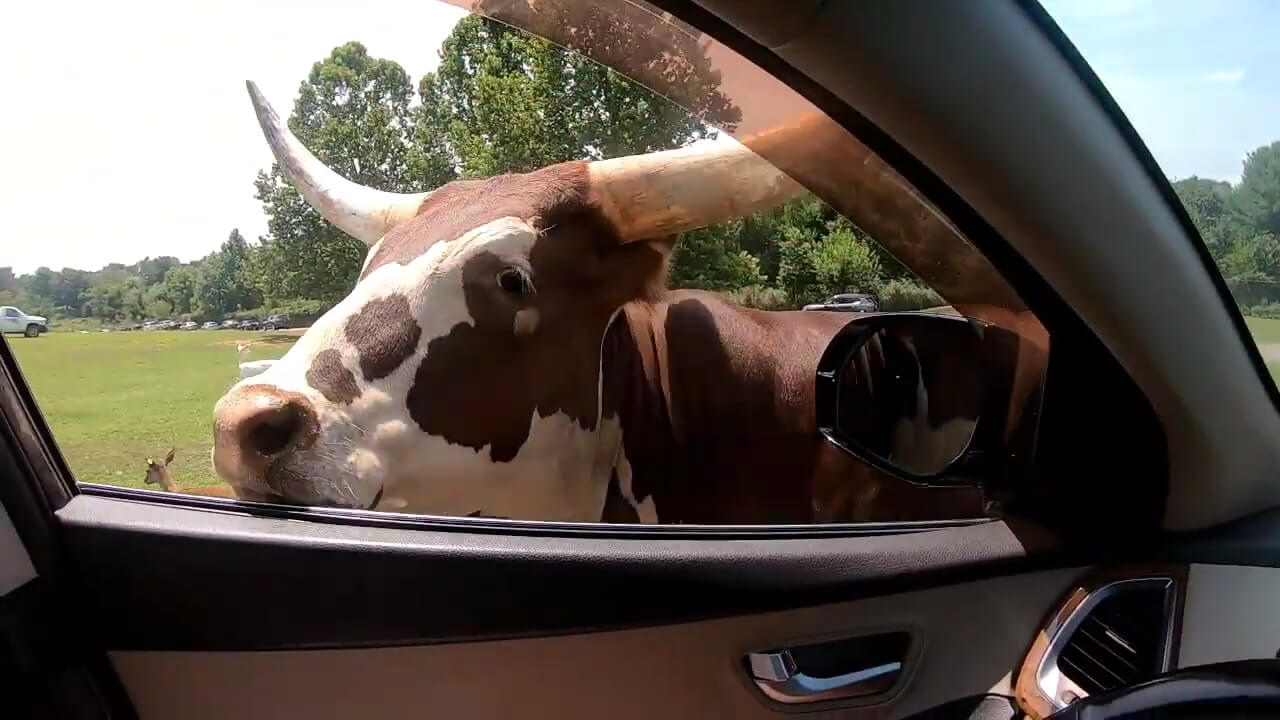
Indigenous to Rwanda, Burundi, and Uganda.
Watusi cattle are famous for their enormous horns, which can span up to eight feet.
These horns are not just for show; they serve a critical function in thermoregulation.
Blood circulates through the horns’ network of vessels, releasing excess body heat.
| Characteristic | Details |
|---|---|
| Unique Fact | Watusi cattle’s large horns can weigh up to 15 pounds each and are used for cooling the blood, thanks to a network of blood vessels. |
These animals can stand up to six feet tall and weigh as much as 1,600 pounds.
In many African cultures, Watusi cattle are a symbol of wealth and status, revered for their beauty and resilience.
21. Pygmy Goat
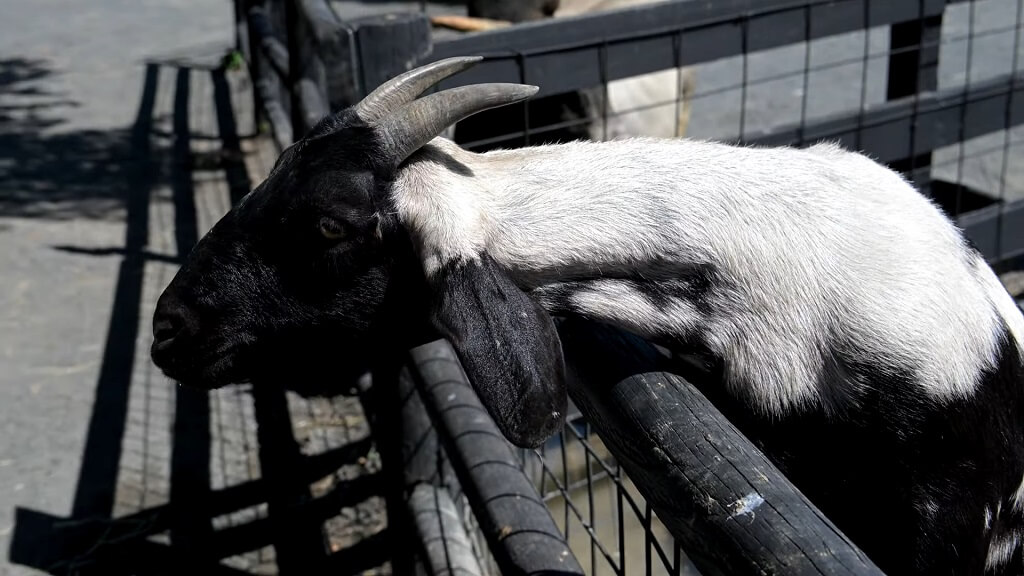
Originated in West Africa, now found globally due to domestication.
Pygmy goats are small, hardy, and adaptable, making them popular pets and livestock.
They usually give birth to twins, though they can have singletons or larger litters.
Both sexes can have horns, and they are known for their playful and friendly demeanor.
| Characteristic | Details |
|---|---|
| Unique Fact | Pygmy goats are known for their playful behavior, often engaging in spontaneous jumps and headbutts. |
These goats were first introduced to the United States in the 1950s for exhibition in zoos.
Their ability to thrive in various environments has led to their widespread popularity.
22. Miniature Zebu
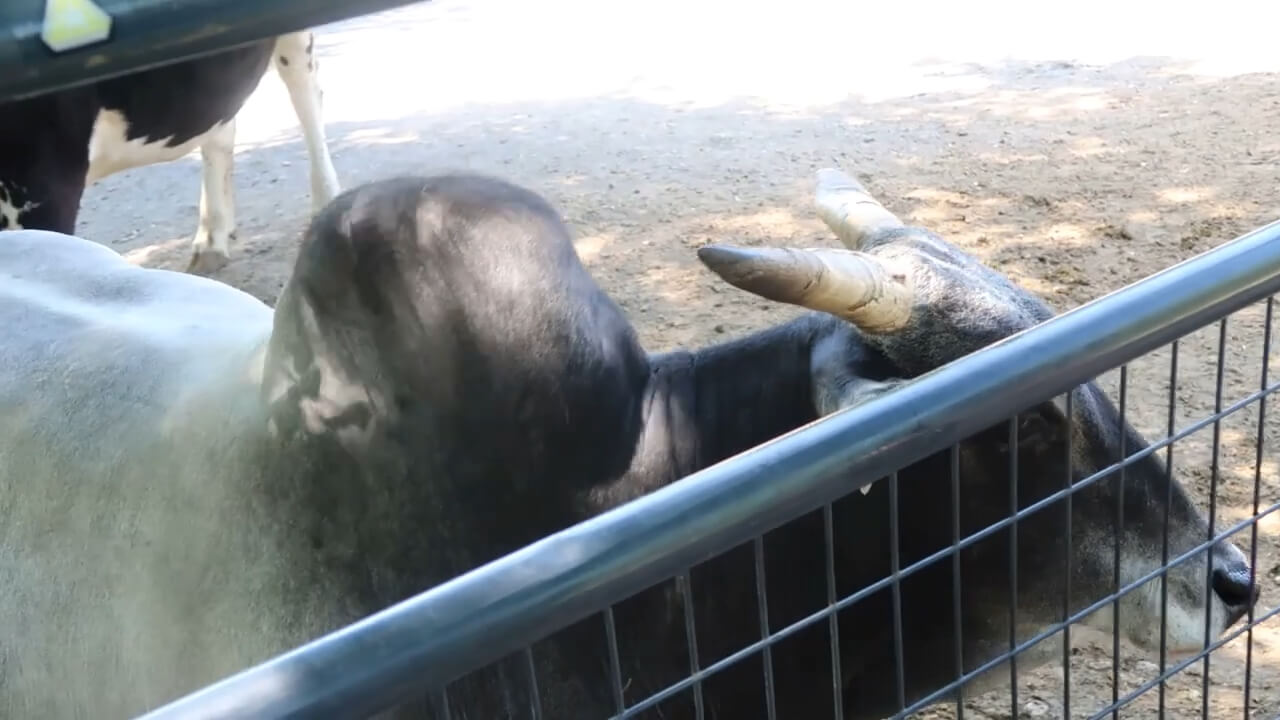
Native to Southern India.
Miniature zebus are among the smallest cattle breeds in the world, standing just over three feet tall.
Known as “Nadudana” in Hindi, meaning “small cattle,” they were first brought to the U.S. in the 1920s for zoo exhibitions.
| Characteristic | Details |
|---|---|
| Unique Fact | Miniature zebus are one of the oldest domesticated cattle breeds, with records of their use dating back over 3,000 years. |
They have a prominent hump over their shoulders, which is made up of muscle and an enlarged vertebra.
This hump increases in size with age and is a characteristic feature of the breed.
23. Kunekune Pig
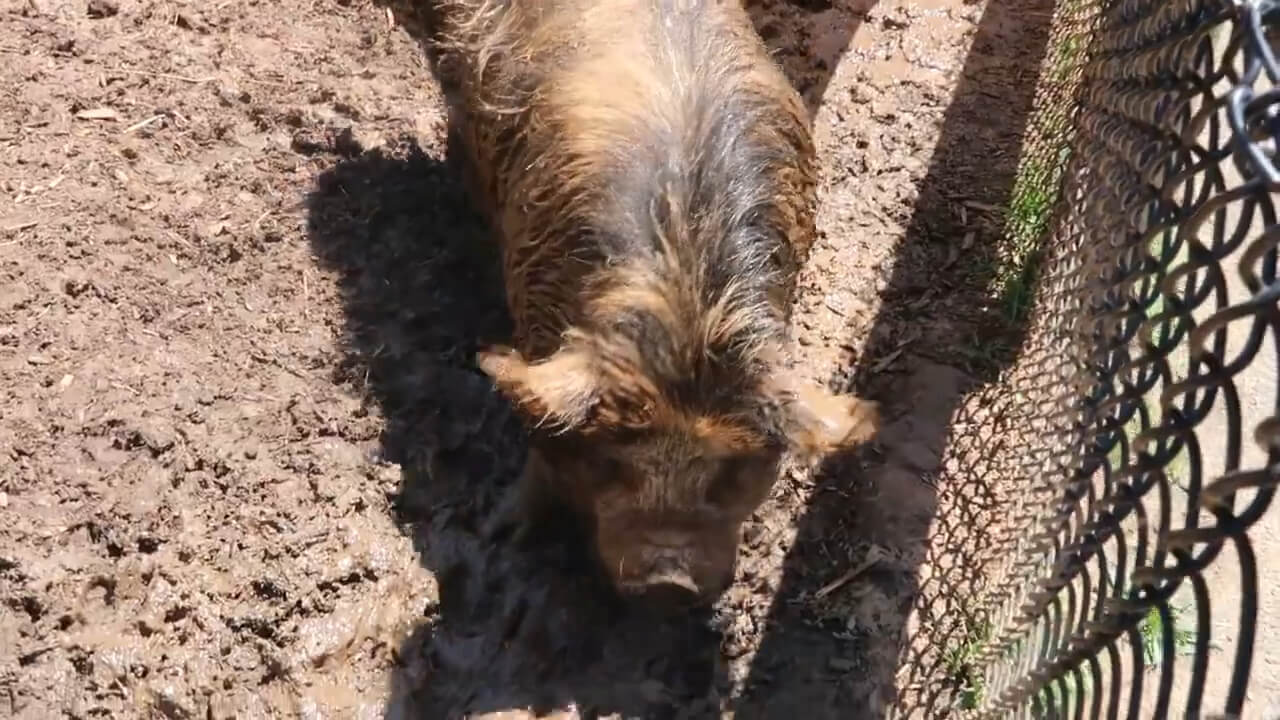
Originated in New Zealand.
The name “kunekune” means “fat and round” in Māori, perfectly describing these small pigs.
They were nearly extinct by the 1970s, but conservation efforts have revived the breed, which is now found worldwide.
| Characteristic | Details |
|---|---|
| Unique Fact | Kunekune pigs are known for their docile nature and are often raised as pets due to their friendly temperament. |
Kunekune pigs are known for their friendly temperament and are often kept as pets or for pasture management due to their grazing habits.
They have distinctive tassels, called “piri piri,” that hang from their lower jaws.
24. Holland Lop Rabbit
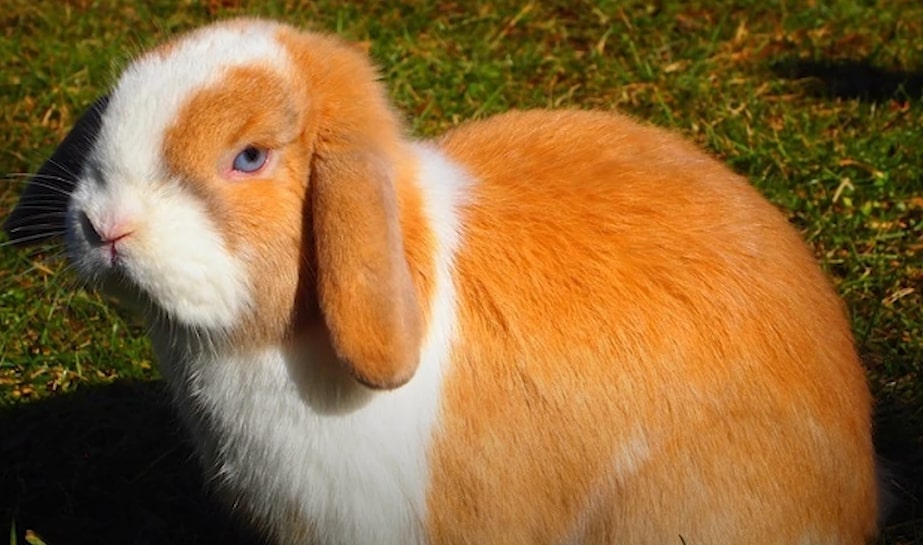
Developed in the Netherlands.
The Holland Lop is one of the smallest rabbit breeds, weighing around four pounds.
They were created in the 1950s by breeder Adriann de Cock, who combined several breeds to achieve the desired size and lopped ears.
| Characteristic | Details |
|---|---|
| Unique Fact | Holland Lop rabbits are known for their affectionate nature and are often described as the “dog of the rabbit world” due to their loyalty to owners. |
Their compact size and gentle nature make them popular pets. They come in a variety of colors and patterns, adding to their appeal among rabbit enthusiasts.
25. Bennett’s Wallaby
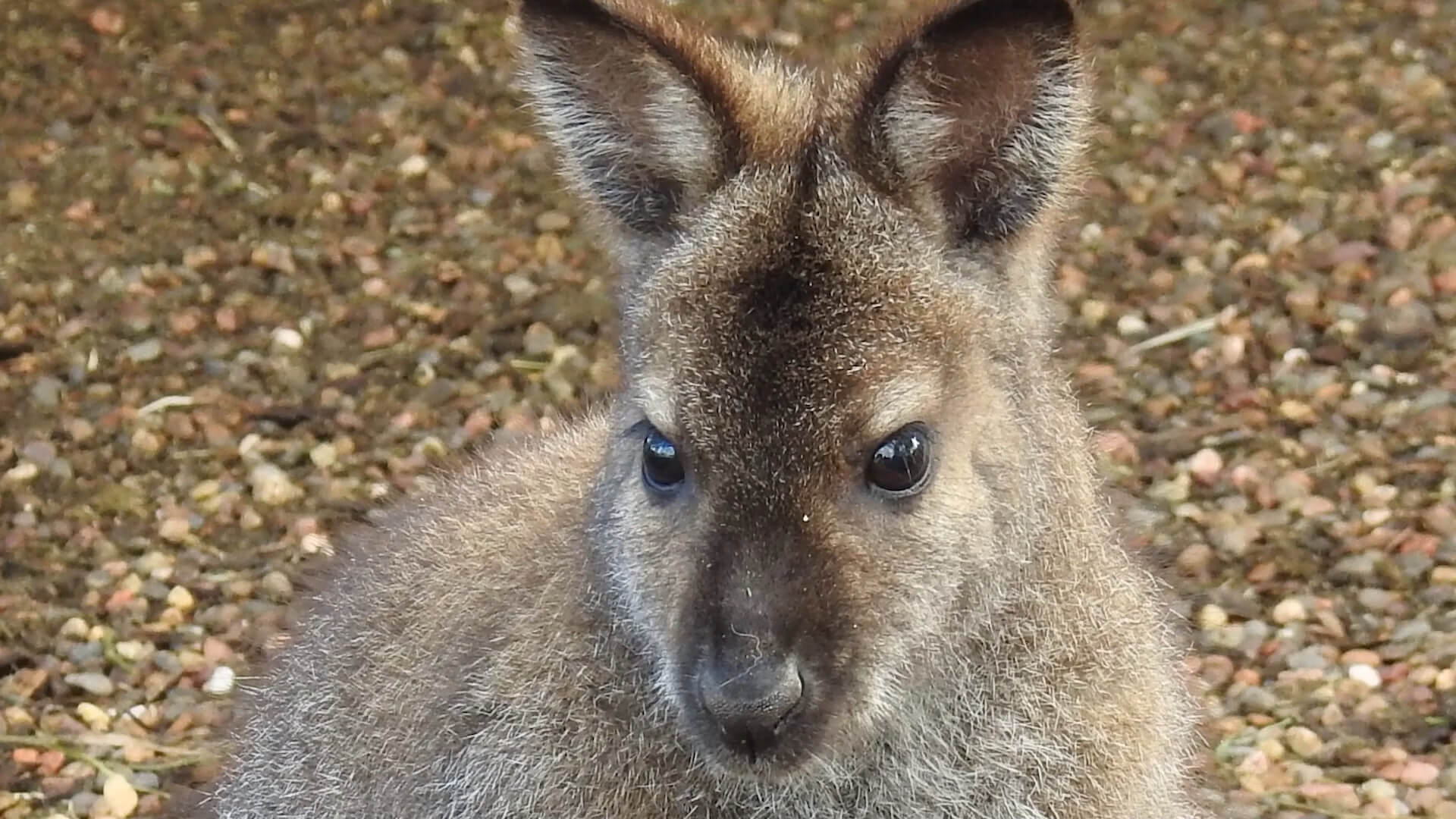
Native to Eastern Australia and Tasmania, introduced to other regions.
Bennett’s wallabies are mostly nocturnal and prefer solitude, though they may gather when food is plentiful.
They have a unique cooling method, licking their paws and forearms to regulate body temperature.
| Characteristic | Details |
|---|---|
| Unique Fact | Bennett’s wallabies are capable swimmers, using their strong tails for balance while navigating water. |
While generally quiet, they can communicate through body language and sounds like growls or hisses when threatened. Their adaptability has allowed them to thrive in various environments outside their native range.
26. Red Kangaroo
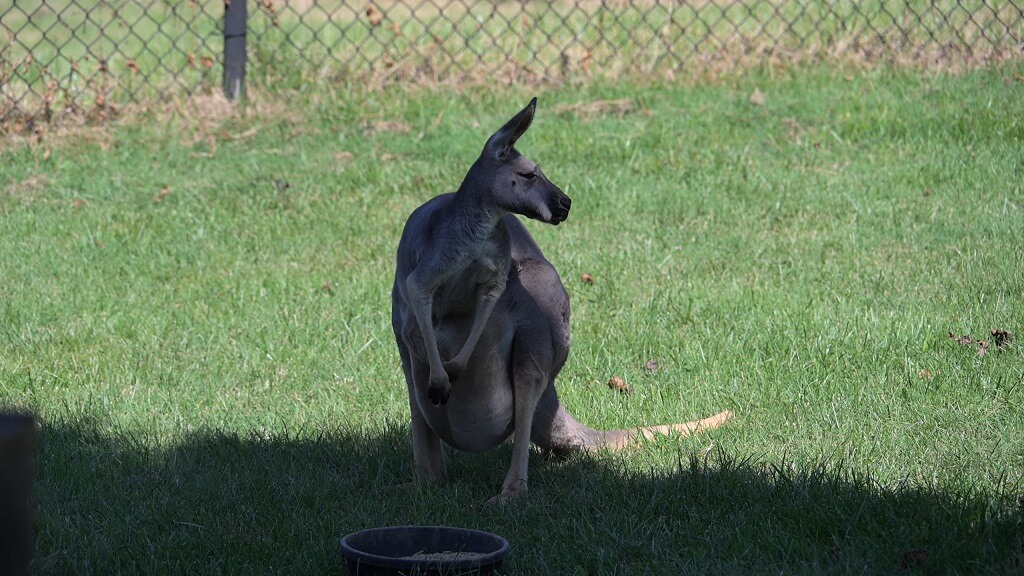
Widespread across western and central Australia.
Red kangaroos are the largest marsupials, with males capable of standing over six feet tall.
Females have the remarkable ability to produce two different types of milk simultaneously for joeys at different developmental stages.
| Characteristic | Details |
|---|---|
| Unique Fact | Red kangaroos can leap over 30 feet in a single bound, using their strong hind legs and large feet. |
They can delay the birth of a new joey until the pouch is vacant, a process known as embryonic diapause.
Newborns are tiny, about the size of a jelly bean, and crawl into the pouch to continue developing.
Their powerful hind legs enable them to leap great distances, making them a symbol of Australia’s unique wildlife.
Related Posts:
- 11 Upcoming Virginia Beach Concerts You Don’t Want…
- 10 Deadliest Animals in Virginia You Need to Know…
- 9 Best Spas in Virginia Beach You Need to Visit in 2024
- How to Plan the Perfect 5-Day Virginia Road Trip -…
- 12 Scariest Abandoned Places in Virginia You Can Still Visit
- 6 Food Dishes You Can Only Get in Virginia


